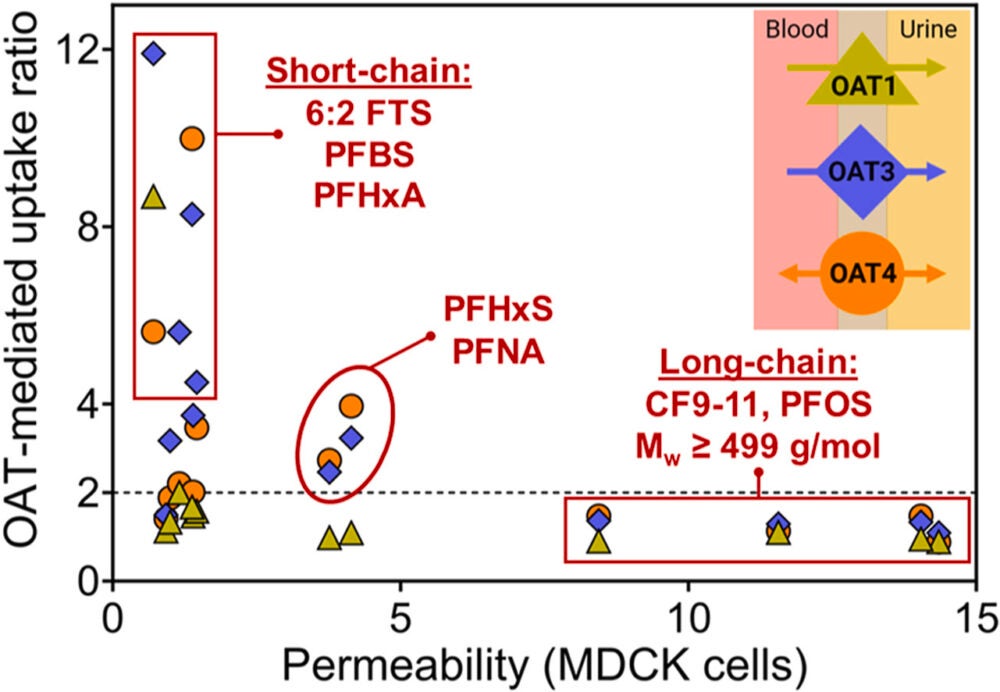In a recent publication from STEEP Project 3 researchers in Chemosphere, scientists examined kidney transporters for removal and bioaccumulation for 14 PFAS. Research found that individual PFAS properties, including permeability, or the ability to pass through membranes, molecular weight, and ionization, or the process by which ions are formed by gain or loss of an electron from an atom or molecule, are predictors of kidney transport and removal.
Using properties like permeability and transporter interactions, the 14 PFAS assessed were classified and evaluated for potential kidney secretion.
A positive relationship was found between PFAS lipophilicity, or ability to dissolve into fat, and apparent permeability, leading to kidney retention, as is observed with pharmaceuticals. PFAS with low permeability were active with organic anion transporter 1 (OAT1) and OAT 2, proteins in the kidneys that move drugs, metabolites, and toxins, indicating kidney secretion. Research found that OAT4, another protein, assisted in kidney reabsorption of some PFAS, including perfluorohexane sulfonate (PFHxS).
6:2 FTS, an emerging PFAS used as an alternative to phased-out PFOA and PFOS, showed low permeability but strong transporter interactions, prompting the critical need for research of emerging and complex PFAS for risk assessment. Overall, this research advances the understanding of kidney absorption and elimination of PFAS in humans, gaining ground for further toxicological evaluation and regulation.
Sangwoo Ryu, Emi Yamaguchi, Seyed Mohamad Sadegh Modaresi, Juliana Agudelo, Chester Costales, Mark A. West, Fabian Fischer, Angela L. Slitt. Evaluation of 14 PFAS for permeability and organic anion transporter interactions: Implications for renal clearance in humans. Chemosphere 2024 Volume 361, 142390.


